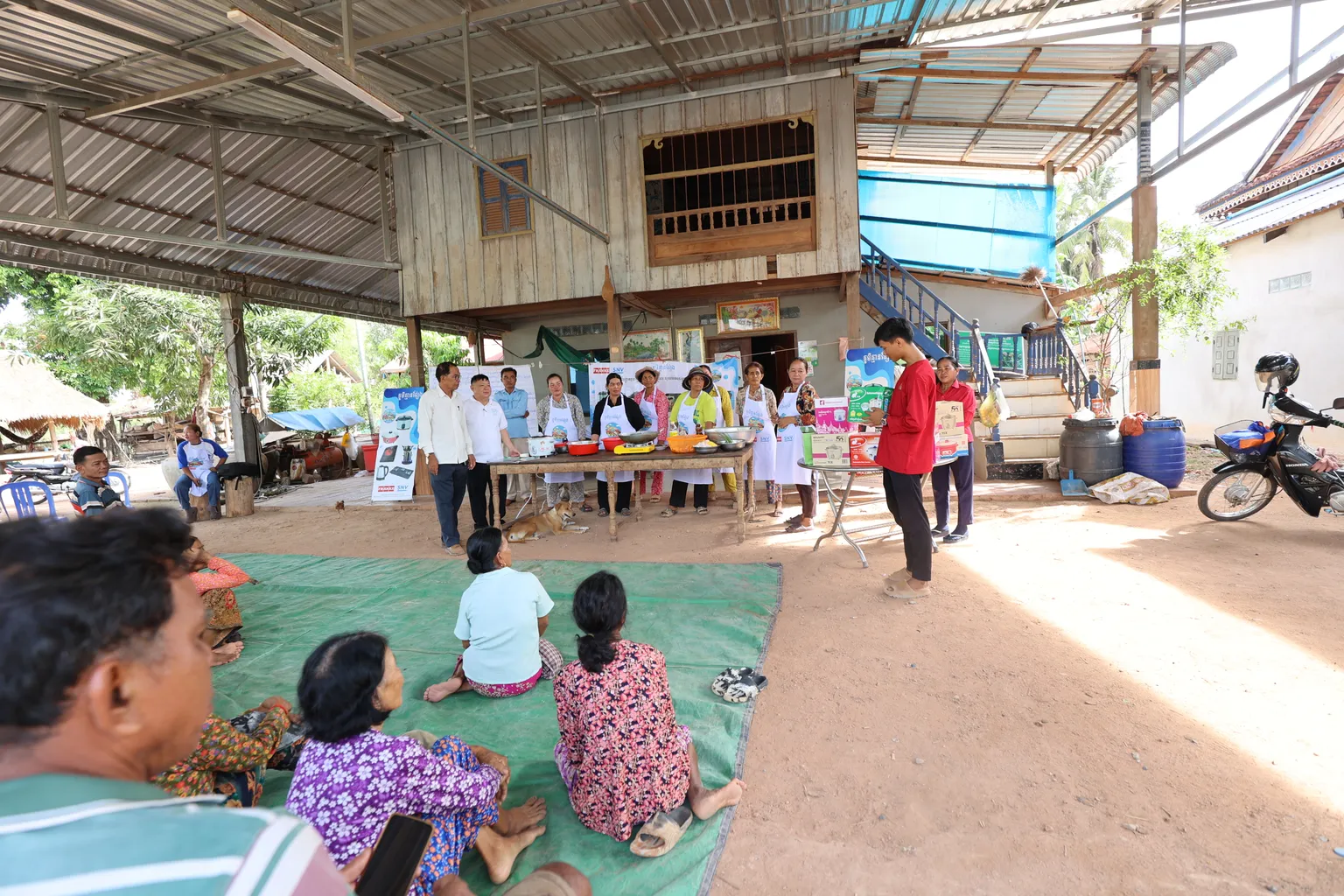Clearer choices, cleaner air: Community insights propel healthier cooking initiatives

Effective communication is not just about sharing information - it’s about making a lasting impact. In 2024, with support from Lien Aid, the Smoke-Free Village (SFV) project set out to refine its Social and Behaviour Change Communication (SBCC) materials, ensuring they resonate more deeply with rural communities. These materials promote the use of clean cookstoves and highlight the dangers of firewood smoke exposure. To enhance their effectiveness, photographers and artists worked alongside SNV to update visuals and storytelling approaches, making them more relatable and accessible.
Creative content development begins with formative research. The teams interviewed key community members - including health workers, village leaders, monks, and other civic leaders - to gather initial feedback about how effectively the benefits of clean cooking are conveyed. Then, different groups of stakeholders assessed and refined varied prototypes.

Community leaders reviewing the SBCC information.
Cycles of feedback and continuous improvements are invaluable in ensuring clear information speaks directly to end users. For instance, one poster featuring various clean cookstoves with text descriptions was particularly well-received. Ms Ke Menear from Kampot province noted, 'When I look at it, I can clearly see which stoves I already have and which ones I might want to buy in the future.' By including a variety of cookstoves, the poster helps viewers make informed choices about their options.
The updated SFV banner, which depicts “three behaviours” associated with clean cooking, now includes men and women cooking together. Community members responded positively to the inclusive messaging, with Mr Nob Somrith, a local leader from Kampot province, commenting, 'Seeing a man cooking on the banner tells people that cooking is not just for women. It’s something everyone can do.'

Example of a behavioural change material used in the project.
SFV’s flipbook, which is used by community workers in door-to-door messaging, combines visuals of health impacts, environmental benefits, and cost comparisons between clean and traditional cookstoves. Formative research highlighted the importance of combining images with a facilitator guidebook. For example, Ms Yin Chu from Kampot province shared that 'The black lung picture really scared me,' underscoring that a facilitator can help clarify and detail the health risks associated with smoke exposure. Likewise, a health centre poster featuring an anatomical depiction of smoke-affected organs generated equally strong reactions, underscoring the need for health centre staff to explain the poster’s content with sensitivity.
The formative research also helped shape SFV's new brand identity, incorporating diverse stakeholders and reinforcing the message that 'everyone, from students to monks, is part of the transition to clean cooking.'
This research was invaluable in refining SFV’s SBCC materials. As a result of this work, the project has clarified some images and descriptions, expanded facilitator training, and broadened distribution to maximise community reach. By depicting diverse stakeholders, including men, monks, and health staff, the materials emphasise that clean cooking is a shared responsibility.
Ms Ke Menear from Kampot province summarised the project’s impact, 'Now that we know more about clean cooking, we can make better choices for our health and the environment.'